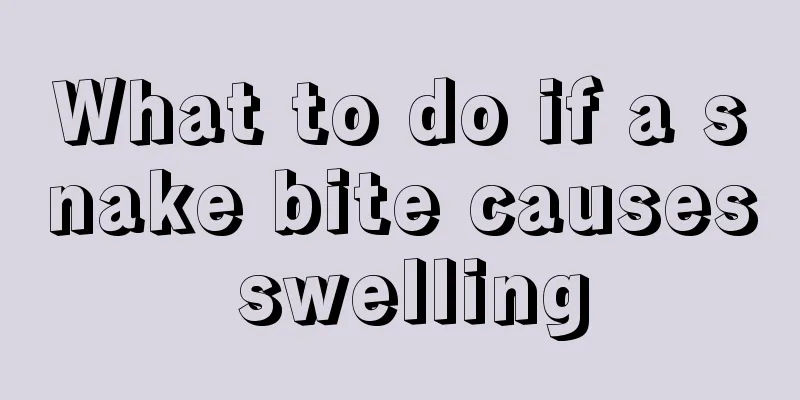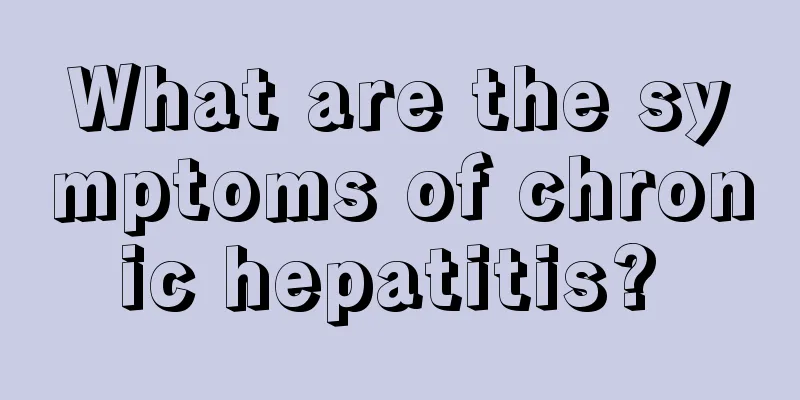What to do if a snake bite causes swelling

|
Snakes are very dangerous animals to humans. Once bitten by a snake, the skin will become red, swollen and painful. If bitten by a venomous snake, purple spots and blisters will appear around the wound, and serous blood will ooze out. At this time, the subcutaneous tissue will become necrotic, and people will show symptoms such as fever, nausea, vomiting, low blood pressure, cramps, hematuria and even pupil constriction. In severe cases, it can be fatal. So what should you do if you get bitten by a snake and it swells? 1. Stay calm No matter when you encounter something, the first thing is not to panic, calm yourself down and keep a clear head. Otherwise, if you get anxious, you may lose your composure and miss the best time to treat the wound. So, the first thing is to stay calm. 2. Determine whether it is a venomous snake bite If you didn't see it with your own eyes, but suddenly found a wound, then you should first confirm whether it is a venomous snake bite. If you are bitten by a venomous snake, the wound is usually deeper, with two large tooth marks, and may cause symptoms such as local weakness. If you see someone being bitten by a snake with your own eyes, you need to make sure whether the snake that bit you is a venomous snake. Common venomous snakes include the pit viper, cobra, etc. 3. Unable to determine whether it is a venomous snake If the venomous snake that bites you is one you have never seen before, or you are not sure whether it is a venomous snake, you can ask your companions to kill the snake and take it away when you are sent to the hospital for treatment. This will make it easier for the doctor to determine the venom in your body and help with the treatment. 4. Dial 120 When you find that you have been bitten by a venomous snake, do not hesitate, call 120 immediately and call an ambulance. Because for those bitten by a venomous snake, time is life. Different venomous snakes have venom that spreads at different rates and has different degrees of toxicity. However, no matter what, the most important thing is to seize the time for treatment. 5. Emergency treatment Before carrying out formal processing, the most important thing is to grasp the time and do a good job of emergency processing. Find a belt nearby and tie it tightly around the wound to slow the spread of the venom. Then use a knife to cut the wound into a cross shape, and then squeeze the blood vessels to drain out as much venom as possible. (Don’t just use the most addictive method as shown in TV dramas, as this can easily cause drug addicts to become poisoned) 6. Take pills In addition to emergency treatment, it is best to take some antidote tablets or some antidote ointment and apply the ointment to the bite wound. It is best to use both together. Remember, do not use common disinfectants such as alcohol for detoxification. 7. Reduce movement After being bitten by a poisonous snake, don't try to be brave and keep exercising. The venom of venomous snakes travels throughout the human body through the bloodstream. If you move around after being bitten, it will speed up the flow of venom in your body, which will speed up your poisoning symptoms. So, try not to move. |
<<: The benefits of drinking wolfberry and mulberry soaked in water
>>: What to do if your finger is swollen after being stabbed
Recommend
How to make roast duck delicious
Although roast duck is sold in many places, the c...
Five major symptoms of liver cancer, detailed description of the dietary conditioning methods that liver cancer patients should pay attention to
As the number of patients with liver disease incr...
Barbecue methods and techniques
When it comes to barbecue, no one is unfamiliar w...
What does it mean to have a short tongue
There are differences between people. Not only ar...
How to quickly desensitize your face if it's allergic? Four tips to teach you how to quickly desensitize
Spring and autumn are the peak seasons for skin a...
What to do if hearing loss occurs due to nasopharyngeal cancer
What should I do if I suffer from hearing loss du...
What causes lung cancer headaches
Headaches in lung cancer patients may be related ...
Butt crack itchy and peeling
The buttocks can be said to be the dirtiest part ...
This is what causes onychomycosis on the big toe
Onychomycosis of the big toe is a relatively comm...
Formaldehyde content of latex paint
Latex paint is a common household paint nowadays,...
Does chocolate contain high sugar content
Chocolate is one of the more common snacks in our...
What's going on with my bloated belly
The feeling of abdominal distension is very uncom...
How is lung cancer generally treated? These methods are the most effective in treating lung cancer
As more and more people are suffering from lung c...
How many years can you live after treatment of breast cancer in the middle and late stages
I believe that most of my friends are similar. Wh...
Cure rate after secondary resection of gastric cancer
The cure rate after secondary resection of gastri...









